Projects
| Modeling, Forecasting and Policy Evaluation for Intelligent Transportation Funded by the Fundamental Research Funds for the Central Universities (No. 202442005), ¥1,000,000, 2024.01-2026.12 This project aims to develop an intelligent traffic analytics framework through three integrated components: (1) mining spatiotemporal patterns of congestion propagation in road networks using big data to identify critical influencing factors and inter-road correlations; (2) constructing a graph neural network-based prediction system with multi-source data fusion for real-time traffic forecasting; (3) establishing a policy evaluation mechanism that assesses public transport performance across accessibility, reliability, and equity dimensions while quantifying policy impacts on congestion mitigation and efficiency improvement. The research will generate both predictive tools for traffic management and evidence-based policy recommendations for sustainable urban mobility. | 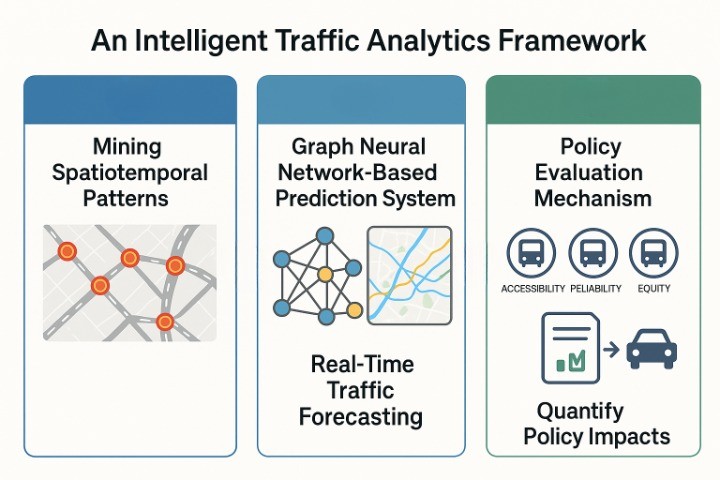 |
| Large-scale Pre-trained Model for Spatiotemporal Representation Learning Funded by the Taishan Scholars Program of Shandong Province, China (No. Tsqn202312083), ¥750,000, 2024.01-2026.12 This project initiative aims to develop an innovative pre-trained spatiotemporal representation learning model to address three critical applications of spatiotemporal data mining: (1) traffic flow prediction in intelligent transportation systems, (2) location recommendation in location-based social networks (LBSN), and (3) hydrological forecasting in marine science. The project will focus on establishing an effective deep learning framework based on large-scale pre-trained models for spatiotemporal representation learning, while systematically investigating and validating the model's effectiveness across these diverse application domains. | 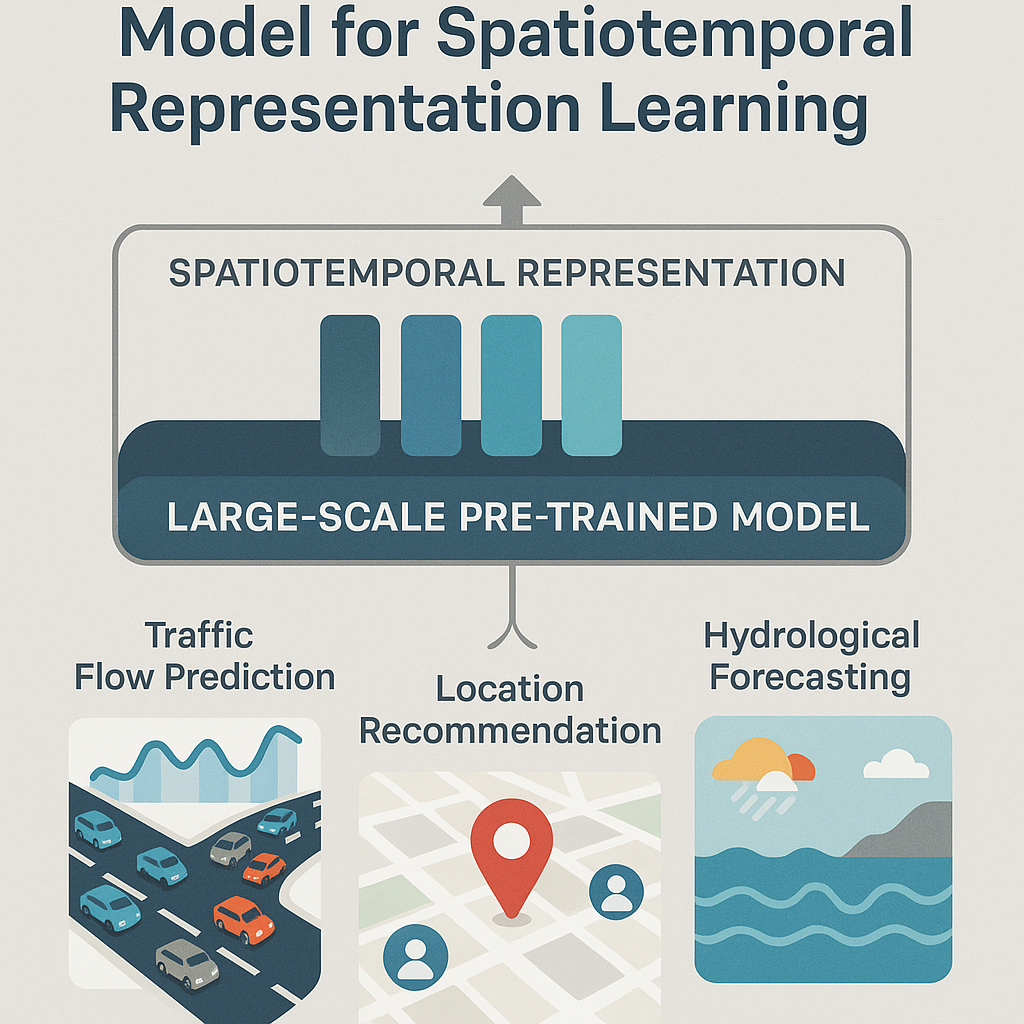 |
| Representation Learning for Large-Scale Complex Spatiotemporal Data and Its Applications Funded by NSFC (No. 62176243), ¥739,000, 2022.01-2025.12 This project plans to conduct an in-depth study on representation learning for large-scale spatiotemporal data and its applications. First, we will build an effective representation learning framework with the exploration of spatiotemporal data from different dimensions. Then, we target at five different real-world applications for our evaluation of spatial-temporal representation learning frameworks, i.e., trajectory-user linking, trajectory prediction, location recommendation, relationship inference, and trajectory anomaly detection. Specifically, we will design customized deep learning models for these applications within their unique spatial-temporal context. | 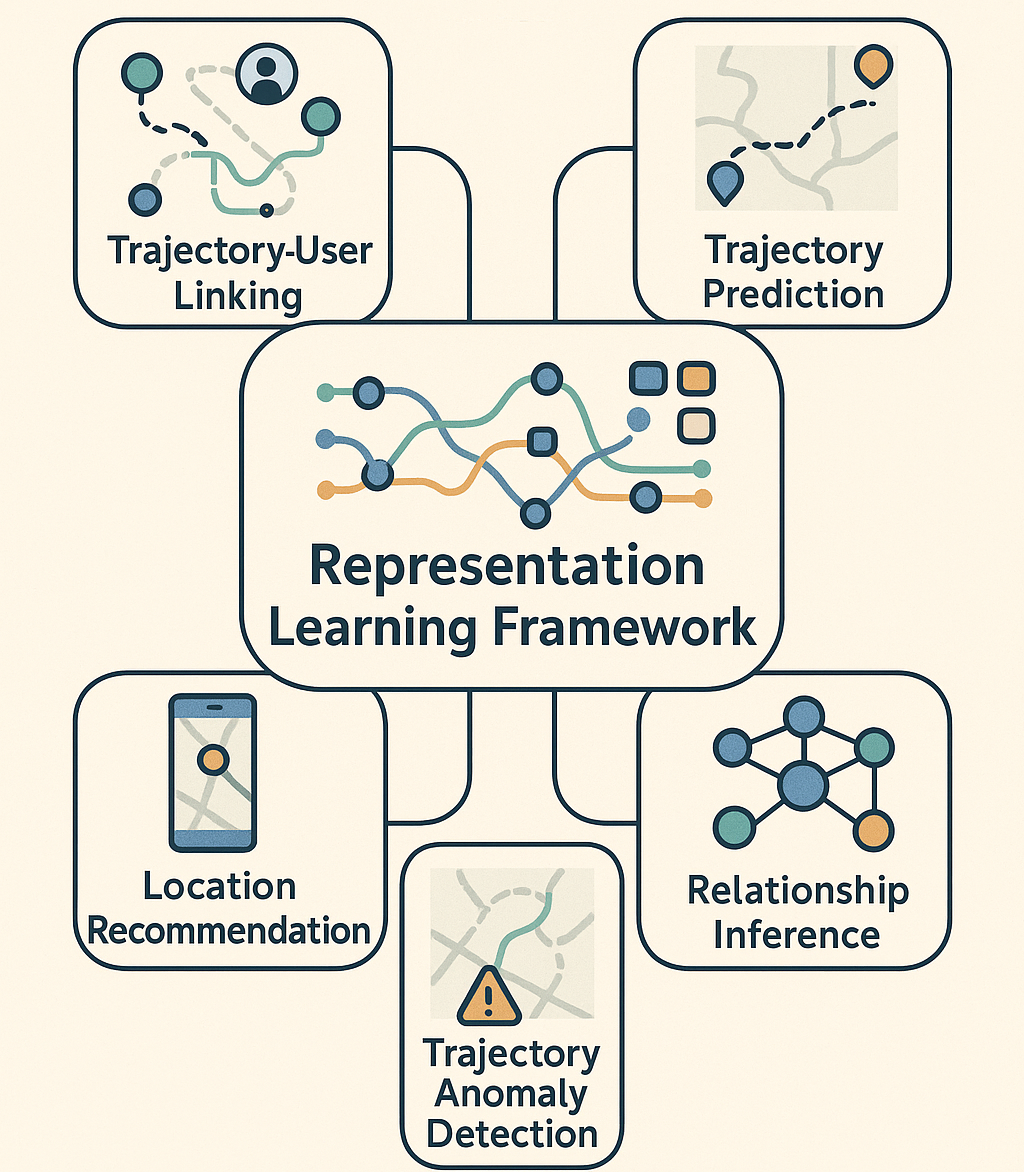 |
| Semantic Annotation and Semantic Pattern Mining for Trajectory Big Data Funded by NSFC (No. 61773331), ¥768,000, 2018.01-2021.12 This project selects spatiotemporal trajectory big data as the research object, and conducts in-depth research on the semantic-integrated trajectory data pattern mining and anomaly detection technologies. For mobility relationship inference integrating semantic features, this project proposes a friend relationship inference model based on graph embedding, which introduces semantics such as POI categories into meeting events, effectively improving the inference performance of friend relationship. For important location inference based on traffic big data, this project proposes an accurate home location and work area inference method, which realizes the annotation of important locations on sparse vehicle trajectories. For traffic inference based on traffic big data, this project completed a series of studies on citywide traffic volume inference, from spatiotemporal semi-supervised model to traffic simulator model, and to spatiotemporal representation learning model, achieving the state-of-the-art performance. For high-efficiency anomaly detection, this project proposes a fast Top-n local anomaly detection algorithm. Aiming at the problem of local anomaly detection in streaming big data environment, a Top-n local outlier detection method based on kernel density estimation is designed, which realizes efficient and effective Top-n local outlier detection in streaming big data. For the anomaly detection of high-dimensional data, this project proposes a layer-constrained variational auto-encoding kernel density estimation model and an autoregressive flow-based anomaly detection model. | 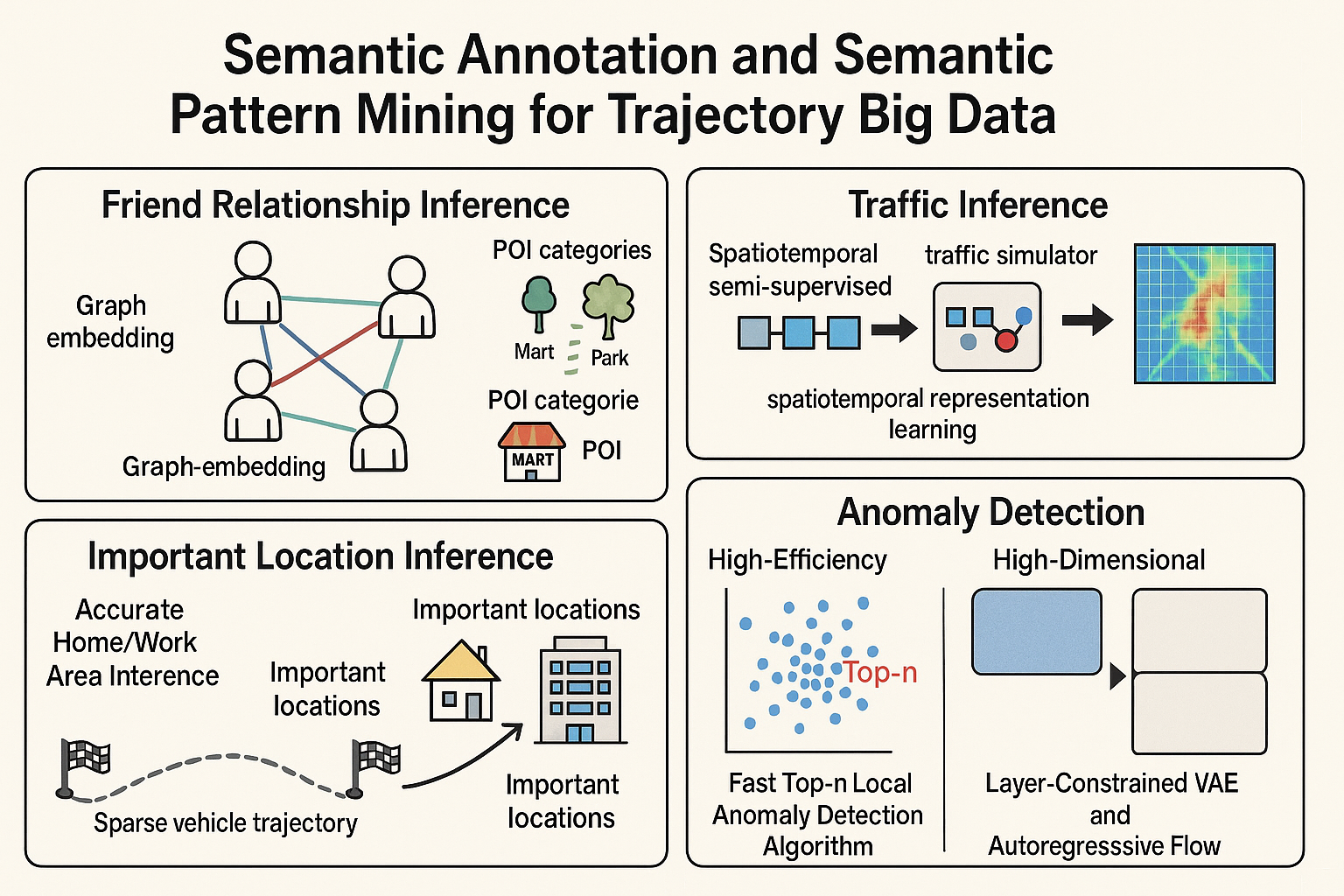 |
| Distributed Anomalous Event Detection over Big Spatio-Temporal Data Streams Funded by NSFC (No. 61403328), ¥250,000, 2015.01-2017.12 This project has carried on the thorough research of distributed outlier detection and trajectory pattern mining for spatiotemporal trajectory big data. First, we proposed a class of novel neighbor-based trajectory stream outlier model, which takes the different semantics of spatiotemporal neighbors and effectively captures various anomalous events in different scenarios. Second, we completed a series of efficient clustering algorithms and density-based clustering for streaming big data, and implemented the evolving clustering analysis in spatiotemporal data streams. Third, we designed a load-balanced data partition method in distributed stream processing system for spatiotemporal big data. Finally, we also completed the mining of trajectory group patterns based on cluttering for high-volume trajectory streams, and further realized the parallel algorithm design for distributed spatiotemporal trajectory pattern mining. | 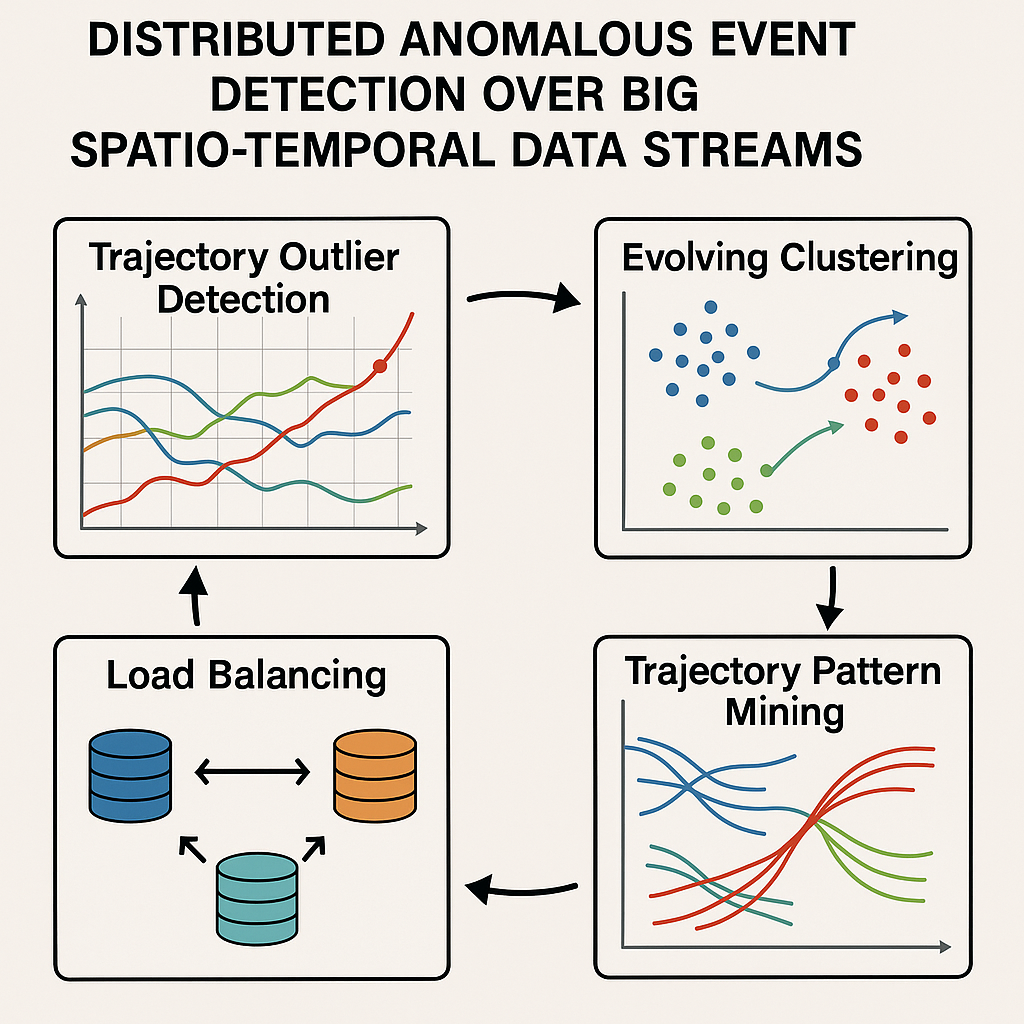 |